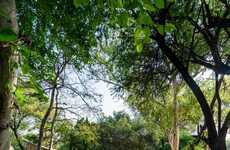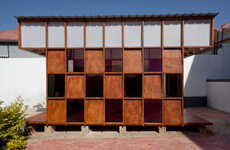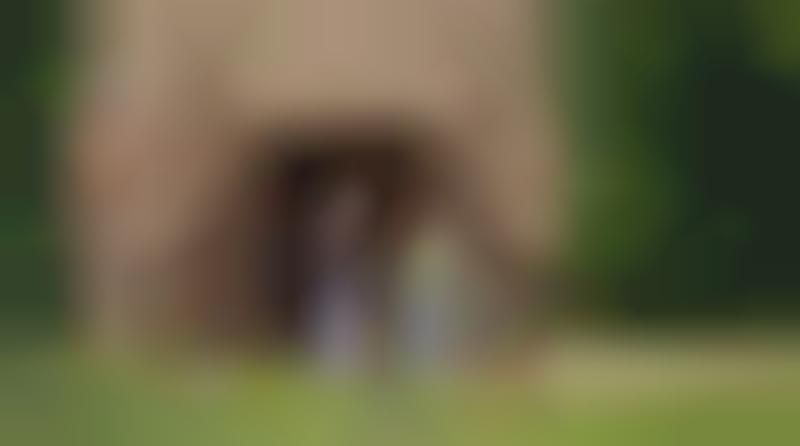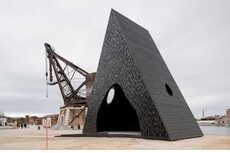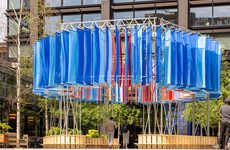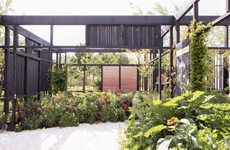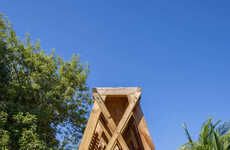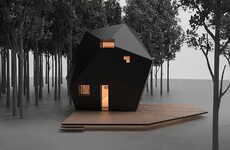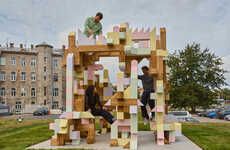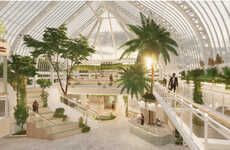
Flea Folly Architects Uses Local Materials for This Pavilion
References: fleafollyarchitects & dezeen
A combination of local materials was used for the creation of this beautiful pavilion at the Kew Wakehurst botanic gardens in West Sussex, England. The pavilion is one of five temporary installations, adorning the space at the moment. The structure was built by London-based studio Flea Folly Architects and it is called the False Banana Pavilion. Inspired by the detailing and form of traditional Ethiopian dwellings, the designers intended to "highlight the importance of enset, a flowering plant in the banana family that provides a food source for more than 20 million people in Ethiopia." The structure has a timber frame and is clad in woven hazel branches and compressed water-reed sheets.
The local materials, sourced for this project, are entirely natural and serve to create what Flea Folly Architects call "a vernacular piece of architecture."
Image Credit: Jim Holden
The local materials, sourced for this project, are entirely natural and serve to create what Flea Folly Architects call "a vernacular piece of architecture."
Image Credit: Jim Holden
Trend Themes
1. Local Sourced Sustainability - The trend of utilizing sustainable and natural materials found on-site in construction and design projects can provide an opportunity for disrupted architectural styles.
2. Cultural Influences in Design - The trend of utilizing traditional cultural influences in modern architecture can provide an opportunity for engaging and educational architectural styles.
3. Temporary Installations in Public Spaces - The trend of creating temporary installations in public spaces can provide an opportunity for designers to create unique, attention-grabbing installations and for businesses to showcase their brand's identity through artistic installations.
Industry Implications
1. Architecture and Construction - Architecture and construction firms can leverage local materials and cultural influences to create unique and sustainable designs that stand out from traditional structures.
2. Tourism and Hospitality - The tourism and hospitality industry can use innovative and educational installation designs to enhance their property's aesthetic and provide engaging activities for guests.
3. Art and Design - Art and design firms can utilize public installations to showcase their design and artistic abilities while creating experiential marketing campaigns for businesses.
6.1
Score
Popularity
Activity
Freshness


